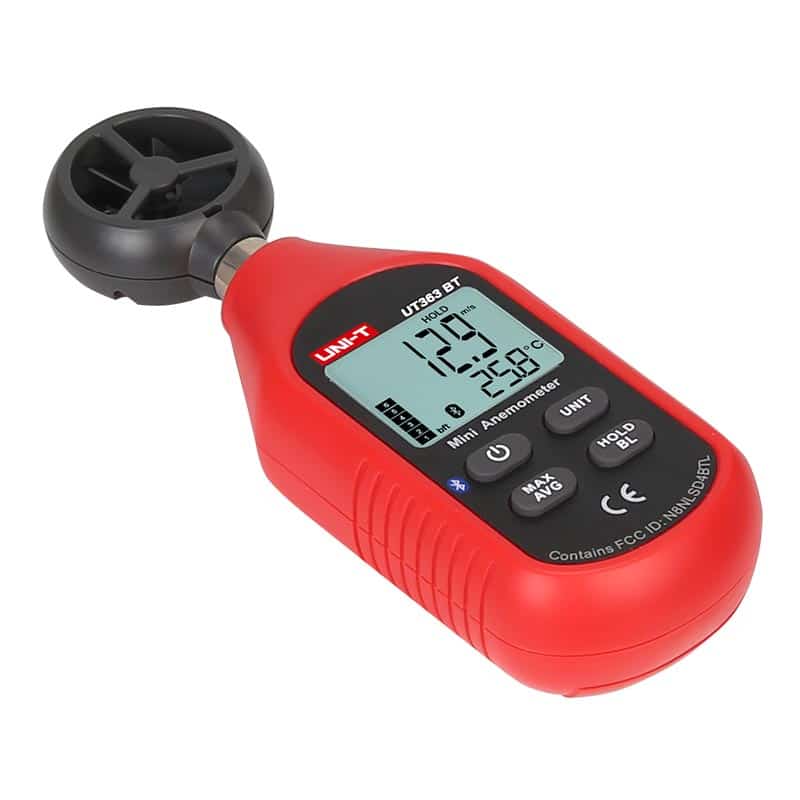Anemometer Innovations: The Most Recent Innovation for Wind Speed Measurement
Anemometer Innovations: The Most Recent Innovation for Wind Speed Measurement
Blog Article
All You Need to Understand About Anemometers: Just How They Function, Why They Matter, and Where to Make use of Them
Anemometers, though typically overlooked in the world of scientific tools, play an important role in different fields, using valuable understandings into wind rate and airflow patterns. Comprehending the mechanics behind these gadgets is essential for any individual seeking to harness the power of this information. From meteorologists tracking weather condition patterns to designers creating structures with wind tons in mind, the applications of anemometers are diverse and significant. As we explore the complexities of anemometer modern technology, we will discover the internal operations of these devices, their relevance, and the key considerations when choosing the appropriate anemometer for particular applications.

Anemometer Basics
A vital instrument used to measure wind rate and instructions, the anemometer plays a vital function in meteorology and numerous sectors. An anemometer normally includes three or 4 mugs that turn in the wind, a vane that points right into the wind, and sensors to track the rotations or motions. By calculating the turnings or movements over a specific period, the anemometer can figure out wind speed. The vane helps establish wind instructions by pointing right into the wind, supplying important information for climate forecasting, aeronautics, maritime operations, ecological tracking, and wind power applications.
There are various types of anemometers readily available, including mug anemometers, vane anemometers, hot-wire anemometers, and sonic anemometers, each with its unique attributes and applications. Cup anemometers are frequently made use of for fundamental wind rate measurements, while vane anemometers are liked for directional dimensions. Hot-wire anemometers appropriate for reduced airspeeds, and sonic anemometers are ideal for high-precision dimensions in study and industrial setups. Understanding the basics of anemometers is important for accurate wind information collection and evaluation throughout different industries.
Principles of Anemometer Operation
Structure on the foundational understanding of anemometer fundamentals, the principles of anemometer procedure illuminate the auto mechanics behind wind rate and instructions measurements. Mug anemometers, for instance, have 3 or more mugs that catch the wind, causing them to rotate quicker as the wind rate boosts. Hot-wire anemometers rely on a warmed cable that cools down as wind passes over it, with the price of cooling down determining the wind rate.
Relevance of Anemometers
Anemometers play a vital duty in gauging wind rate and instructions, giving essential data for weather forecasting, environment researches, ecological surveillance, and aeronautics procedures. Meteorologists depend on anemometers to gather accurate wind information, helping them comprehend weather patterns, predict storms, and issue timely site here warnings to the public. Wind ranch drivers use anemometers to evaluate wind conditions and optimize electrical power production from wind turbines.
Applications Throughout Numerous Industries
In the renewable power industry, anemometers play a critical duty in assessing wind problems for wind farm positionings, making sure optimum energy production. Industries like building and mining utilize anemometers to monitor wind rates, vital for safety and security methods, specifically when functioning at elevations or in open-pit mines where strong winds can posture risks. In agriculture, anemometers aid farmers in managing plant splashing by giving real-time data on wind speed to stay clear of drift.

Picking the Right Anemometer for Your Needs
For general objectives, a cup anemometer is suitable for gauging wind rate, while a vane anemometer provides wind instructions information. Hot-wire anemometers are ideal for reduced airspeed dimensions, and ultrasonic anemometers use high precision and toughness.

Verdict
To conclude, anemometers play a vital function in measuring wind rate and instructions across numerous sectors. Comprehending the principles of anemometer operation is important for choosing the ideal device for details requirements. From meteorology to aeronautics, anemometers are crucial tools for making sure and collecting exact data safety and security in different applications. When choosing the most appropriate tool for gauging wind problems., it is vital to take into consideration the relevance of anemometers in order to make informed decisions.
There are different kinds of anemometers available, consisting of cup anemometers, vane anemometers, hot-wire anemometers, and sonic anemometers, each with its distinct functions and applications. Mug anemometers are generally used for standard wind rate dimensions, while vane anemometers are preferred for directional measurements. Hot-wire anemometers are appropriate for reduced airspeeds, and sonic anemometers are excellent for high-precision measurements in research and industrial settings.Building on the foundational understanding of anemometer fundamentals, the concepts of anemometer operation elucidate the technicians behind wind speed and direction measurements. For general purposes, a cup anemometer is ideal for determining wind rate, while a vane anemometer gives wind direction data.
Report this page